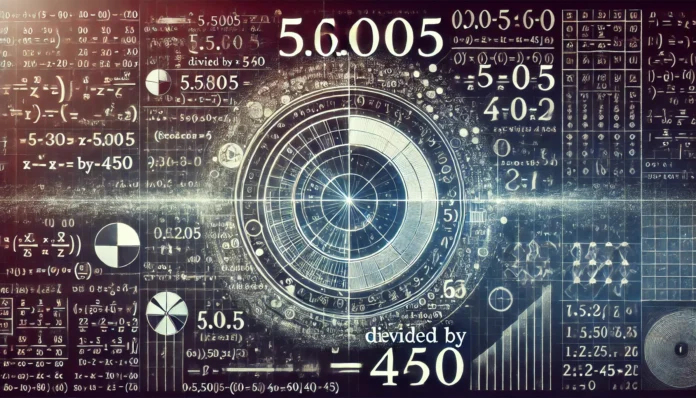Ever seen “5.0005/450” pop up and wondered what it’s all about?
It’s a number ratio that might seem random at first glance, but it holds value in precise calculations, engineering setups, or even industry-specific applications.
You’ve probably found yourself asking:
- What does this ratio mean?
- Where can it be applied?
- Why is it even relevant to me?
Let’s break it down so you can see how it connects to real-life scenarios without overcomplicating things.
What Does “5.0005/450” Mean in Practical Terms?
When you see “5.0005/450,” think of it as a fraction or a comparison.
- 5.0005: The numerator (or top part) usually represents the part of a whole, a measure, or a precise value in technical contexts.
- 450: The denominator (or bottom part) often sets the scale or total against which the top value is measured.
For example:
- In engineering, it might indicate a specific tolerance level or measurement ratio.
- In finance, it could relate to return rates or cost-per-unit calculations.
Numbers like these are about precision. They’re not just placeholders—they serve to minimize errors in systems where every detail counts.

Why Precision Matters with Ratios Like 5.0005/450
Ratios like this aren’t pulled out of thin air.
Let’s imagine a production line manufacturing high-end machine parts.
Every part must fit into a larger system with zero room for error.
If one part deviates—even slightly—it can throw off the entire machine.
Now consider this:
- 5.0005/450 could define the tolerance of a component in micrometers.
- It ensures every piece fits like a glove without extra adjustments.
That’s the power of precise ratios.
Real-Life Examples Where “5.0005/450” Shines
Manufacturing
A manufacturer might use this ratio to measure exact material lengths.
Let’s say:
- A material cut at “5.0005” mm per unit is tested across 450 units.
- The consistency ensures no waste, saving costs and resources.
Finance
In budgeting or investing, “5.0005/450” could represent a return ratio.
Here’s how:
- 5.0005 dollars gained for every 450 dollars invested.
- This helps assess profitability in niche markets.
Science
Researchers testing substances or physical properties often work with tight ratios.
For example:
- Mixing chemicals precisely could rely on a “5.0005/450” concentration.
FAQs About “5.0005/450”
Why such specific numbers?
Specific numbers reduce margin errors. Whether it’s engineering or chemistry, exactness prevents accidents, inefficiency, or waste.
Is “5.0005/450” only relevant in technical fields?
Not at all. While it often appears in technical contexts, ratios have everyday relevance too—like cooking recipes, DIY projects, or budgeting.
How do I use this ratio?
To apply it:
- Treat it like a fraction. Divide 5.0005 by 450 to find the per-unit value.
- Adjust it to your situation, whether measuring, mixing, or comparing.
Can it change in meaning?
Absolutely. Context defines its use. It could mean one thing in construction and something completely different in accounting.
Breaking Down the Math Behind “5.0005/450”
If math makes your head spin, keep it simple.
- 5.0005 ÷ 450 = 0.0111 (approx.)
- This tells you the per-unit value—whether for a product, cost, or measurement.
Say you’re calculating cost per unit:
- If producing 450 items costs 5.0005 dollars, you’re paying about 0.0111 dollars per item.

Takeaways from “5.0005/450”
This isn’t just a random fraction.
It’s a symbol of accuracy, relevance, and utility in different areas of life.
Whether you’re:
- An engineer chasing millimeter precision.
- A small business owner tracking returns.
- A curious learner uncovering number mysteries.
“5.0005/450” shows that even the smallest numbers can tell a big story.
Why “5.0005/450” Stands Out
Think of it like this:
Numbers are tools. And “5.0005/450” is a multi-tool for:
- Precision in measurements.
- Insight into calculations.
- Guidance for decisions.
Next time you spot a number like this, don’t brush it off.
It could be your key to saving money, time, or energy—whether at work or home.
At the end of the day, “5.0005/450” is about finding clarity in the details.
And just like this ratio, life often rewards those who look closer.


